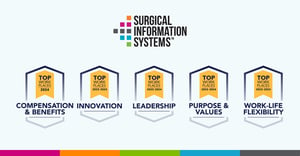 Anne Dean, RN, BSN, is founder of The ADA Group, a consulting firm based in DeLand, Fla., specializing in ambulatory surgical development and regulatory compliance for ASC state licensure, Medicare certification and ASC accreditation.
Anne Dean, RN, BSN, is founder of The ADA Group, a consulting firm based in DeLand, Fla., specializing in ambulatory surgical development and regulatory compliance for ASC state licensure, Medicare certification and ASC accreditation.
Anne Dean: I'm concerned that these ASCs are behind the times. It is very common in a Joint Commission survey or Medicare survey for the surveyors to look at anywhere from 25-45 paper charts and find deficiencies, whether in signatures, dates or times missing. Those EMRs that are designed to mandate completion of required fields and of required documents prevent the ASC from having incomplete charts, and that provides a huge advantage.
Q: Why do you think switching to an EMR is so important for an ASC?
AD: As mentioned, the systems can be highly effective if they demand the charting be complete. I think that's a big plus when you can't move on to another field until what you are working on is complete, signed, dated and timed.
I also believe this is what makes the EMR head and shoulders over the paper process. For example, those clients of mine that are still using paper constantly have to chase doctors to time and date orders, consents and H&Ps, whereas when information is in the EMR, physicians can't exit a screen until they have completed the whole record. I definitely think that's a substantial benefit because it ensures chart completion and maintains regulatory compliance, which benefits everyone, including patients.
From a storage perspective, ASCs, most notably the high volume ones, that are still using paper charts have storage unit after storage unit. They must archive their paper charts for many years. In some states, they need to keep them for 10 years. From a logistics point of view, it's a nightmare. So there's the convenience of an EMR -to be able to archive electronically rather than rely upon organizing reams and reams of paper charts. That is just a huge advantage.
From a convenience point of view, efficiency point of view and accuracy of charting point of view, the EMR is head and shoulders above paper records. All the issues of illegible handwriting are gone. It's amazing.
It is important to note, however, that to get the maximum benefits, you need to switch to an EMR specifically designed for an ASC.
Q: Why do you think switching to an EMR designed for ASCs is so important?
AD: There are a lot of companies selling programs designed for practices that they say are just as appropriate for ASCs. While this type of program may work for the practice, the EMR's documents and tools available for the ASC are just not the same as those that were designed to be in an ASC EMR to start with. As a result, I have found these ASCs to have significant problems with their EMRs.
For example, not all EMRs will demand a field be complete before the person is allowed to move on to the next field or page in a chart. I've been in several centers that are not using brand-recognized ASC EMRs and there's nothing mandating that they complete the field or page any more than there is when using a paper chart. These are EMR programs designed and developed for practices that have been supposedly tweaked to work for an ASC, but they simply do not. They don't have all of the necessary fields and the system uses revised practice charts as opposed to charts designed specifically for an ASC's needs. In that case, I don't see any advantage to using the EMR. Quite frankly, I think it's a disservice to the client.
One of the other problems we have run into in some of these "ASC programs" they're buying is that if they need to make a change in a document, the ASC has to go back to the EMR provider to make the change. This is cumbersome, expensive and creates a significant time problem. Let's say, for example, the organization has decided that now it is going to do pregnancy tests preoperatively on all females capable of bearing children. What the ASC wants is to add a space to the pre-op flow sheet to note when pregnancy tests are completed and the results. Ideally, the organization could have a member of its team go in and put it in the sheet, but in many systems, the ASC has to contact the EMR company and the company's IT person has to make that change. This is a tedious process that can take weeks. I think that's a problem for an ASC when things can change so much more quickly.
Q: You've worked with clients on the switch from paper charts to an EMR. How would you describe the process?
AD: For the ASC clients of mine that have had made the transition, it is must less work and much less hassle than it was when the practices transitioned over. In the ASC, the transition is usually really much, much smoother.
We are emphatically encouraging more of our clients to switch for many reasons. It's all about staying current. Plus, we provide electronic policies, so for those clients with an EMR, they don't even need a hard copy. It's becomes so easy to update their policies because when the policies change, we assist by going into their electronic records each quarter and updating the policy right into their electronic records, making it much simpler for everyone.


















